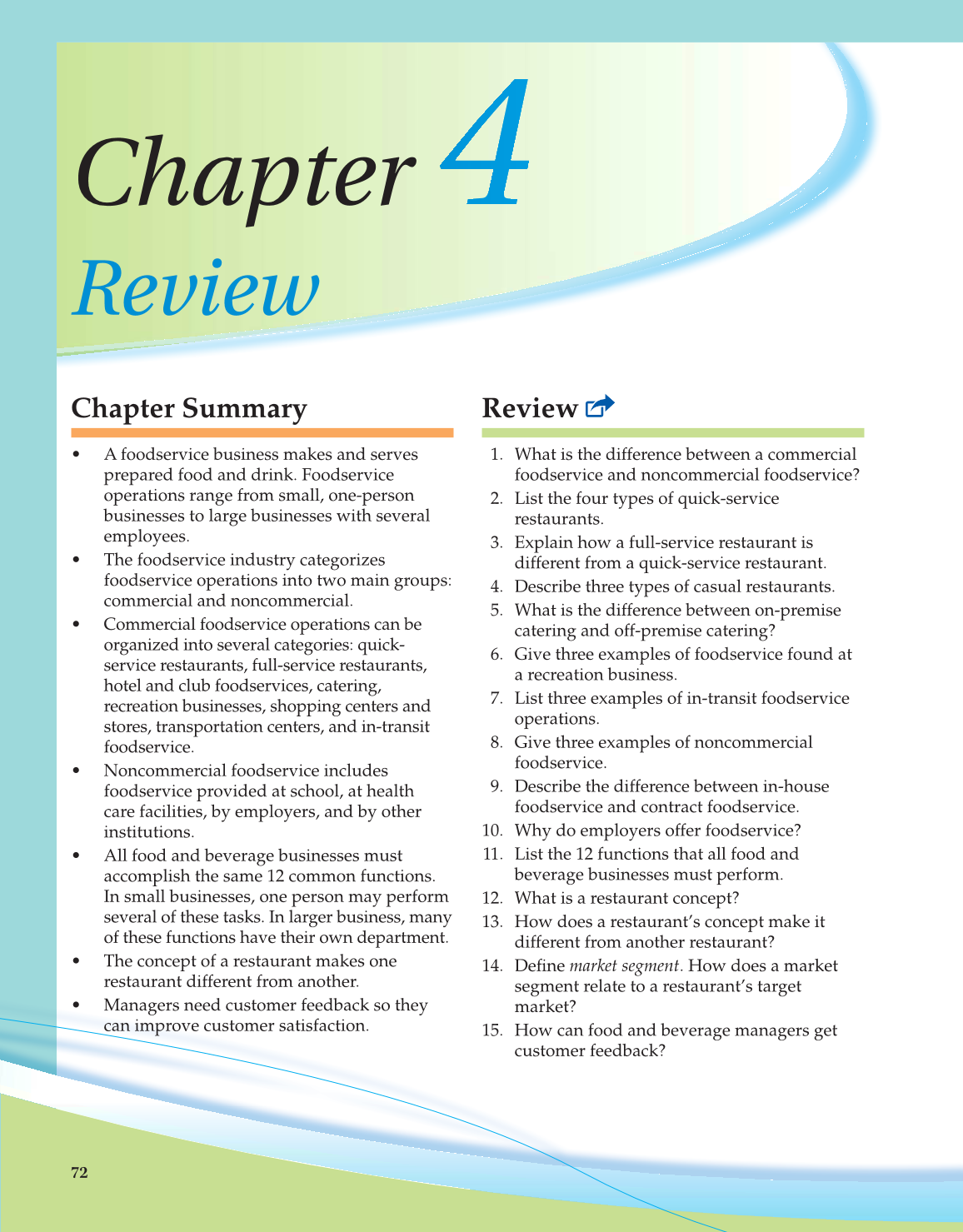72
Chapter Summary
• A foodservice business makes and serves
prepared food and drink. Foodservice
operations range from small, one-person
businesses to large businesses with several
employees.
• The foodservice industry categorizes
foodservice operations into two main groups:
commercial and noncommercial.
• Commercial foodservice operations can be
organized into several categories: quick-
service restaurants, full-service restaurants,
hotel and club foodservices, catering,
recreation businesses, shopping centers and
stores, transportation centers, and in-transit
foodservice.
• Noncommercial foodservice includes
foodservice provided at school, at health
care facilities, by employers, and by other
institutions.
• All food and beverage businesses must
accomplish the same 12 common functions.
In small businesses, one person may perform
several of these tasks. In larger business, many
of these functions have their own department.
• The concept of a restaurant makes one
restaurant different from another.
• Managers need customer feedback so they
can improve customer satisfaction.
Review
1. What is the difference between a commercial
foodservice and noncommercial foodservice?
2. List the four types of quick-service
restaurants.
3. Explain how a full-service restaurant is
different from a quick-service restaurant.
4. Describe three types of casual restaurants.
5. What is the difference between on-premise
catering and off-premise catering?
6. Give three examples of foodservice found at
a recreation business.
7. List three examples of in-transit foodservice
operations.
8. Give three examples of noncommercial
foodservice.
9. Describe the difference between in-house
foodservice and contract foodservice.
10. Why do employers offer foodservice?
11. List the 12 functions that all food and
beverage businesses must perform.
12. What is a restaurant concept?
13. How does a restaurant’s concept make it
different from another restaurant?
14. Defi ne market segment. How does a market
segment relate to a restaurant’s target
market?
15. How can food and beverage managers get
customer feedback?
Chapter
Review
